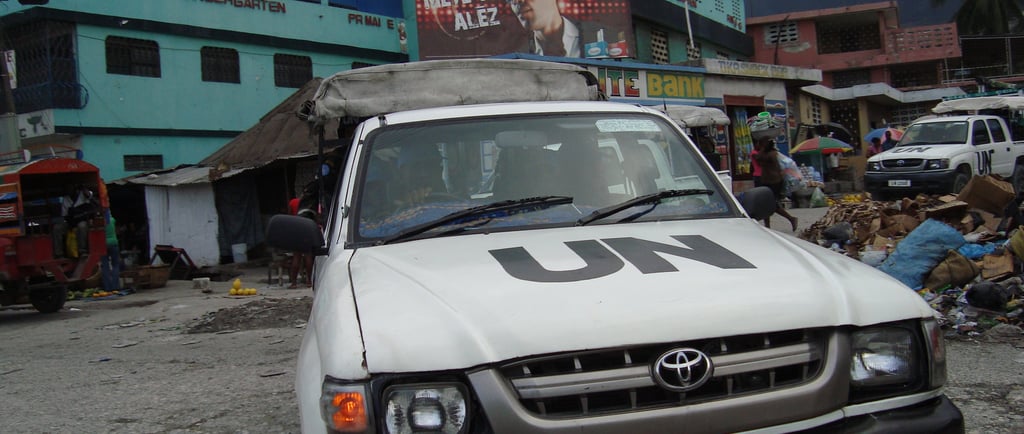What the U.S. Can Learn from the Global Cluster System in Disaster Response
As disasters grow in scale and complexity, the U.S. must rethink how it coordinates health emergency response. Historically, the government handled nearly all aspects of disaster relief—but today, NGOs and private-sector partners play a critical role. The Health Cluster model, used internationally, offers a tested framework for unifying response efforts, preventing duplication, and ensuring resources reach those in need.
3/3/20253 min read


When disaster strikes, coordination is everything. A chaotic response can cost lives, waste resources, and leave communities in prolonged suffering. Internationally, the Cluster System has become the backbone of humanitarian response, ensuring that aid is organized, efficient, and responsive to local needs. Meanwhile, the U.S. emergency management system—rooted in the National Incident Management System (NIMS) and the National Response Framework (NRF)—has traditionally relied on government agencies handling nearly all aspects of emergency response. However, as disasters become larger and more frequent, and as NGOs play an increasingly vital role in response, it is worth examining how the Cluster System could help improve coordination—particularly in the health sector.
What is the Cluster System?
The Cluster System is a UN-led coordination mechanism designed to streamline humanitarian response across different sectors. Created in 2005 after the shortcomings of response efforts in the Darfur crisis and the 2004 Indian Ocean tsunami, the system assigns specific agencies to lead response efforts in designated clusters. These closely parallel the Emergency Support Function (ESF) structure in the U.S. response system:
Health (Cluster 1) - WHO | ESF #8 (Public Health and Medical Services) - HHS
Food Security (Cluster 2) - FAO, WFP | ESF #11 (Agriculture and Natural Resources) - USDA
WASH (Cluster 3) - UNICEF | ESF #3 (Public Works and Engineering) - USACE
Shelter (Cluster 4) - UNHCR, IFRC | ESF #6 (Mass Care, Emergency Assistance, Housing, and Human Services) - FEMA
Logistics (Cluster 5) - WFP | ESF #7 (Logistics Management and Resource Support) - GSA, FEMA
Education, Protection, Camp Coordination, Early Recovery, and others align with various ESFs like ESF #14 (Cross-Sector Business and Infrastructure), ESF #9 (Search and Rescue), and ESF #15 (External Affairs).
While these clusters cover all aspects of disaster response, health coordination is particularly crucial. Public health emergencies—whether pandemics, natural disasters, or biosecurity threats—demand well-organized partnerships between government agencies, NGOs, and private-sector partners.
How Does It Work at the Local Level?
When a disaster occurs, the affected country’s government activates clusters based on needs. This ensures a sector-specific, decentralized response that allows responders to work in tandem with local organizations rather than operating in silos.
At the local level, the Health Cluster:
Facilitates information sharing between hospitals, NGOs, public health agencies, and emergency medical teams.
Ensures priority health needs are addressed, such as setting up field hospitals, managing medical supply chains, and controlling disease outbreaks.
Coordinates resources, including funding, medical personnel, and pharmaceuticals, reducing duplication and ensuring gaps are filled.
Adapts to local contexts, recognizing that health responses must be tailored to the needs of affected communities.
Why the U.S. Should Reconsider Its Health Coordination Model
Historically, the U.S. has not needed a Cluster System because federal and state agencies controlled nearly all aspects of disaster response. However, the scale and frequency of modern disasters—combined with the growing role of NGOs in health response—suggest a more structured coordination model is needed.
Lessons for U.S. Health Emergency Management:
Better Integration of NGOs and Private Sector Partners: The Health Cluster model ensures that government, NGOs, and private medical organizations collaborate in real time, preventing fragmented responses.
Sector-Specific Leadership: While ESF #8 exists, it does not always function as an operational hub for coordination in the same way as the Health Cluster does in international response efforts. Defining clearer leadership structures could improve efficiency.
Stronger Decentralized Coordination: State and local public health agencies are often the first to respond but lack clear mechanisms to coordinate with national and international partners. A Health Cluster-like approach could bridge this gap.
More Flexible and Adaptive Response: Health crises evolve quickly, requiring real-time coordination between field hospitals, supply chains, and epidemiological surveillance. A cluster approach allows for more rapid adjustments than the current ESF structure.
Proactive Preparedness and Capacity-Building: The Health Cluster operates continuously, strengthening local health systems before disasters occur. The U.S. could enhance pre-disaster collaboration with community health organizations to build resilience before emergencies hit.
Final Thoughts
The increasing complexity of health emergencies in the U.S.—from pandemics to climate-driven disasters—demands a more collaborative, adaptable approach to coordination. The Health Cluster model offers a tested framework for integrating government agencies, NGOs, and private-sector partners in a way that prevents duplication, closes resource gaps, and ensures a more effective response. Adopting elements of this system within the U.S. could improve disaster health coordination, making the response faster, more efficient, and ultimately more life-saving.
Health Response Alliance is a nonpartisan 501c3 tax-exempt organization.
All contributions are tax deductible to the extent provided by law.
Federal Identification Number (EIN): 33-2575005
© 2025 Health Response Alliance Inc. ALL RIGHTS RESERVED.
